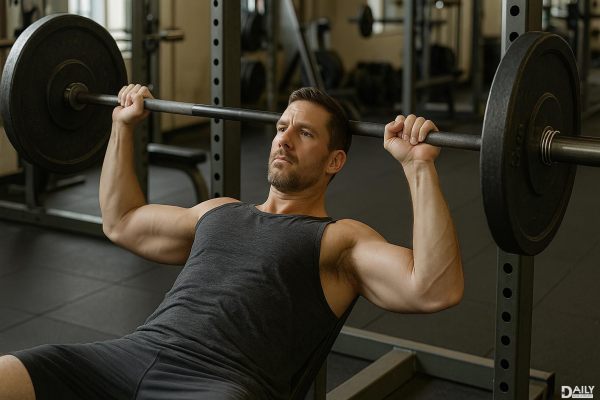If you're a dude over 30 wondering how much weight you should be lifting to build strength and muscle, the answer isn't a one-size-fits-all number. It depends on your fitness level, goals, and how your body responds to training. But here's the good news: lifting heavy (with proper form, of course) is still totally on the table—age is just a number, not a limit. The key is progressive overload, meaning you gradually increase the weight over time to keep challenging your muscles.

First, figure out what you're after—raw strength or bigger muscles. If you want to get stronger, you'll focus on lifting heavier weights for fewer reps (think 3-6 reps per set). For hypertrophy (muscle growth), you'll work in the 6-12 rep range with slightly lighter weights. Both approaches build muscle, but the emphasis changes. And if you're over 30, recovery becomes even more crucial, so don't skip rest days or sleep—your gains depend on it.
Your ideal weight depends on your current strength. A good rule of thumb: if you can bang out more than 12 reps without breaking a sweat, it's too light. If you're grinding out 3 reps with shaky form, it's too heavy. Aim for a weight where the last 2 reps of each set feel tough but doable. For compound lifts like squats, deadlifts, and bench press, most guys over 30 should aim for 70-85% of their one-rep max (1RM) for optimal strength and muscle growth.
Progressive overload isn't just about adding plates to the bar—it's about smart progression. If you're new to lifting, you might add weight every week. More experienced lifters might need slower increases, like every 2-3 weeks. Other ways to progress: increase reps, reduce rest time, or improve form. The goal is to keep your muscles adapting, because if you're not challenging them, they won't grow.
Your recovery game needs to be strong. As testosterone levels naturally dip with age, muscle repair slows down. That means more focus on sleep, nutrition, and mobility work. Aim for 7-9 hours of sleep, prioritize protein (at least 0.8-1g per pound of body weight), and don't ignore stretching or foam rolling. Overtraining is a real buzzkill for progress, so listen to your body—if you're constantly sore or fatigued, dial it back.
Here's a simple template to get you started:
At the end of the day, the best weight to lift is the one that challenges you without wrecking your joints or recovery. Start where you are, progress steadily, and don't compare yourself to the 20-something gym bros—consistency beats intensity in the long run. Your 30s (and beyond) can be your strongest years yet if you train smart.
























